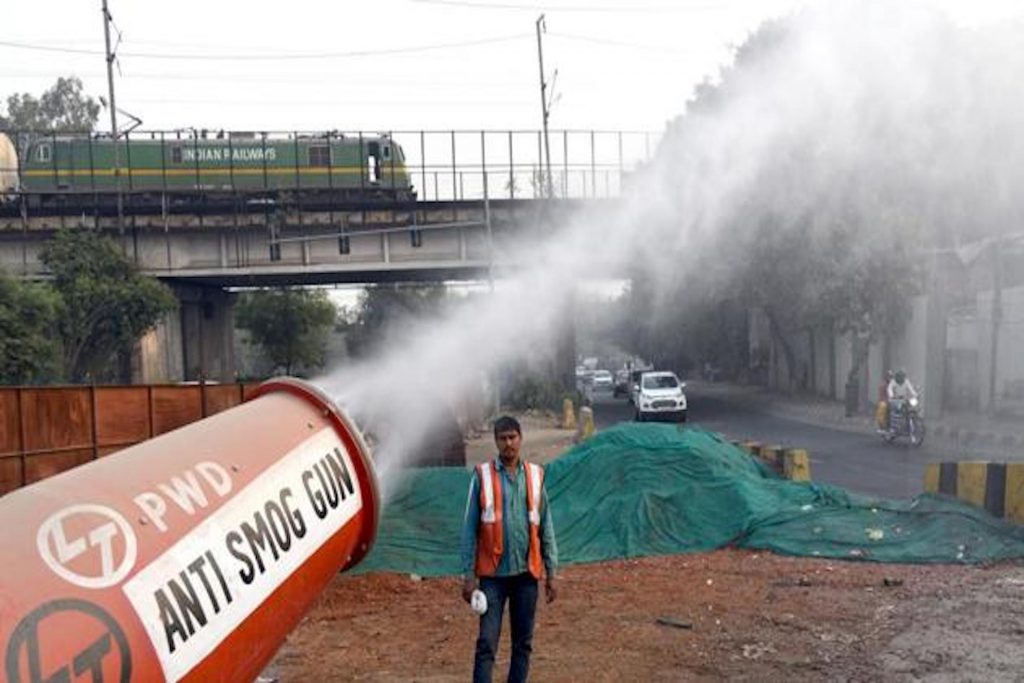Start using PNG or biomass fuel by September 30 this year, or face a shut down, that’s the warning all industries in Haryana, Uttar Pradesh (UP) and Rajasthan located within the National Capital Region (NCR) have been issued. The Commission for Air Quality Management (CAQM) said the decision was taken after conversations with companies, associations and the state governments concerned. The CAQM order said a large number of associations and individuals sought permissions for the use of biomass fuels in addition to PNG [piped natural gas], citing that biomass-based fuels are cleaner than fossil fuels like HSD [high-speed diesel] and coal. Industries in Delhi have already shifted to cleaner fuels, including PNG, the panel said in its order to the three states.
IMD extends air quality information service to 6 more cities
The India Meteorological Department (IMD) has now extended its operational air quality information services for general public and pollution control authorities to Varanasi, Lucknow, Allahabad, Kolkata, Bengaluru and Patna. Earlier, air quality information was being provided only for New Delhi, Chennai, Mumbai, Ahmedabad and Pune. The SAFAR-Air web application developed by the Indian Institute of Tropical Meteorology (IITM), Pune, gives location specific air quality index and advisory in Delhi, Pune, Mumbai and Ahmedabad.
Chennai air pollution 5 times higher than WHO standards: Greenpeace study
A Greenpeace study found Chennai’s air quality levels for 2021 exceeded the World Health Organisation (WHO) limits by five times. The WHO annual limit for PM 2.5 levels is 5 microgram/m3. Chennai’s annual average, calculated from November 2020 to November 2021, was 27 microgram/m3). TOI reported that Manali and Kodungaiyur TNPCB stations recorded six times higher PM 2.5 levels than WHO standards, with 30 microgram/m3, while stations at Perungudi. Royapuram and Velachery recorded three to four times more. Experts pointed out that Chennai is part of the Centre’s ‘million-plus city’ plan that has about 30 cities in it. But the plan does not identify the exact sources of pollution, instead it classifies them generally as vehicular, construction or road dust.
Aggregators asked to increase EV fleet by May to curb air pollution
To bring down air pollution, the Centre asked the Delhi government to ensure all cab-hailing companies and delivery services provide 10% of electric two-wheelers and 5% electric four-wheelers within the next three months. The department of Environment and Forests draft notification directed the Delhi government to increase electric vehicle adoption stating that the transport sector is the primary source of PM2.5 emissions in Delhi, with vehicular emissions accounting for 80% of NO2, CO in Delhi.
Centre’s budget to fight air pollution reduced: Green think-tanks
Différent think-tanks said the government’s 2022-23 budget allocations to fight air pollution have been reduced, reported TOI. The Delhi-based Legal Initiative for Forest and Environment
(LIFE) and Centre for Policy and Research point out that although the overall budget of the ministry has been increased by 20%, from Rs2,520 crore in 2021-22 to Rs3,030 crore in 2022-23, the amount allocated to fight air pollution is not adequate.
LIFE analysis stated that Rs460 crore for ‘control of pollution’ is insufficient to even cover the cost of monitoring air quality in 132 cities where the National Clean Air Plan is implemented. This does not include the 4,000 polluted cities and towns outside the purview of NCAP. The CPR stated that the financial allocation for the Commission on Air Quality Management (CAQM) has decreased and it remained unchanged for the NCAP.
Vehicular traffic, domestic heating key drivers of air pollution in Europe
Europe’s efforts to improve air quality across its cities resulted in the submission of 944 air quality plans to the EEA from 2014 to 2020. With respect to the dominant contributors to poor air quality, the report found that just under two thirds of all reported breaches ofair quality standards were linked to traffic in urban centers and proximity to major roads. Vehicular traffic was identified as a key source of air pollution in western and northern Europe. Austria, Denmark, Finland, the Netherlands, Portugal, and the United Kingdom reported traffic as the only source of exceedances. In southern and eastern Europe, the key driver of air quality standard breaches was identified as domestic heating. Two-thirds of the air pollution control measures focus on reducing emissions of NOx from the transport sector. Despite being important sources of particulate matter, only 12% and 4% of the plans focused on domestic heating and agriculture.
Improvement in air quality reduces cognitive declines in older women: Study
According to a PLOS Medicine study, improvement in long-term air quality in late life is associated with slower cognitive declines in older women. Scientists from the University of Southern California in Los Angeles examined whether AQ improvement was associated with slower rates of cognitive decline in older women (aged 74 to 92 years). The analysis included 2,232 American women enrolled in the Women’s Health Initiative Memory Study-Epidemiology of Cognitive Health Outcomes study, who were dementia free at baseline (2008 to 2012).
The researchers found that during a median 6.2 years of follow-up, there were declines in both general cognitive status and episodic memory. When adjusting for covariates, there was an association seen between greater AQ improvement and slower decline, the study stated.
About The Author
You may also like
Delhi-NCR most polluted region in India, Karnataka the cleanest air in India: Report
Outdoor air quality chronically underfunded, finds State of Global Air report
PM2.5 shortening average life expectancy of Delhi residents by almost 12 years
PM 2.5 air pollution increases anti-biotic resistance globally, India risk increases 2.5%
Green court forms panel to release air pollution control norms around hospitals with in the next 3 months


